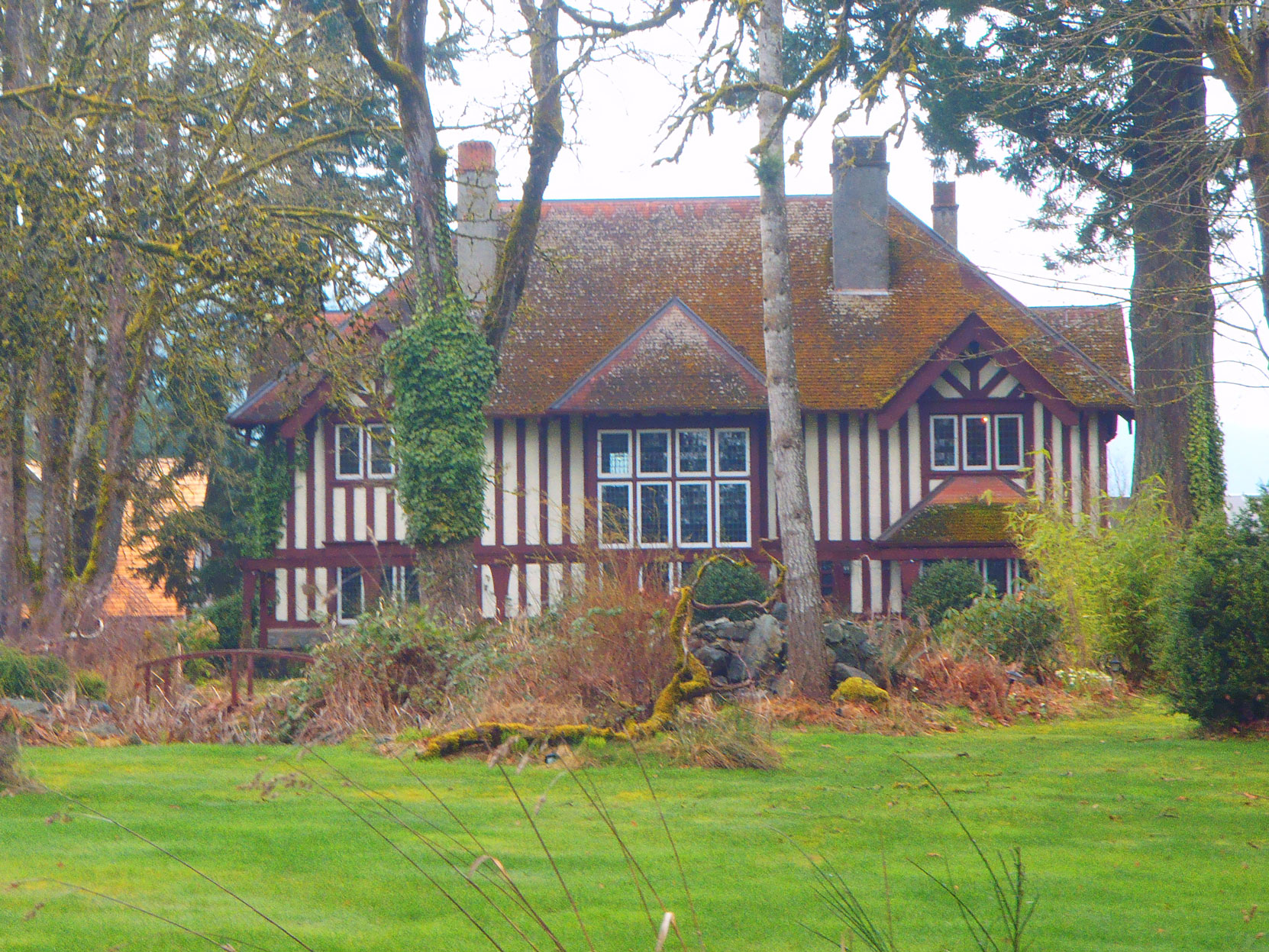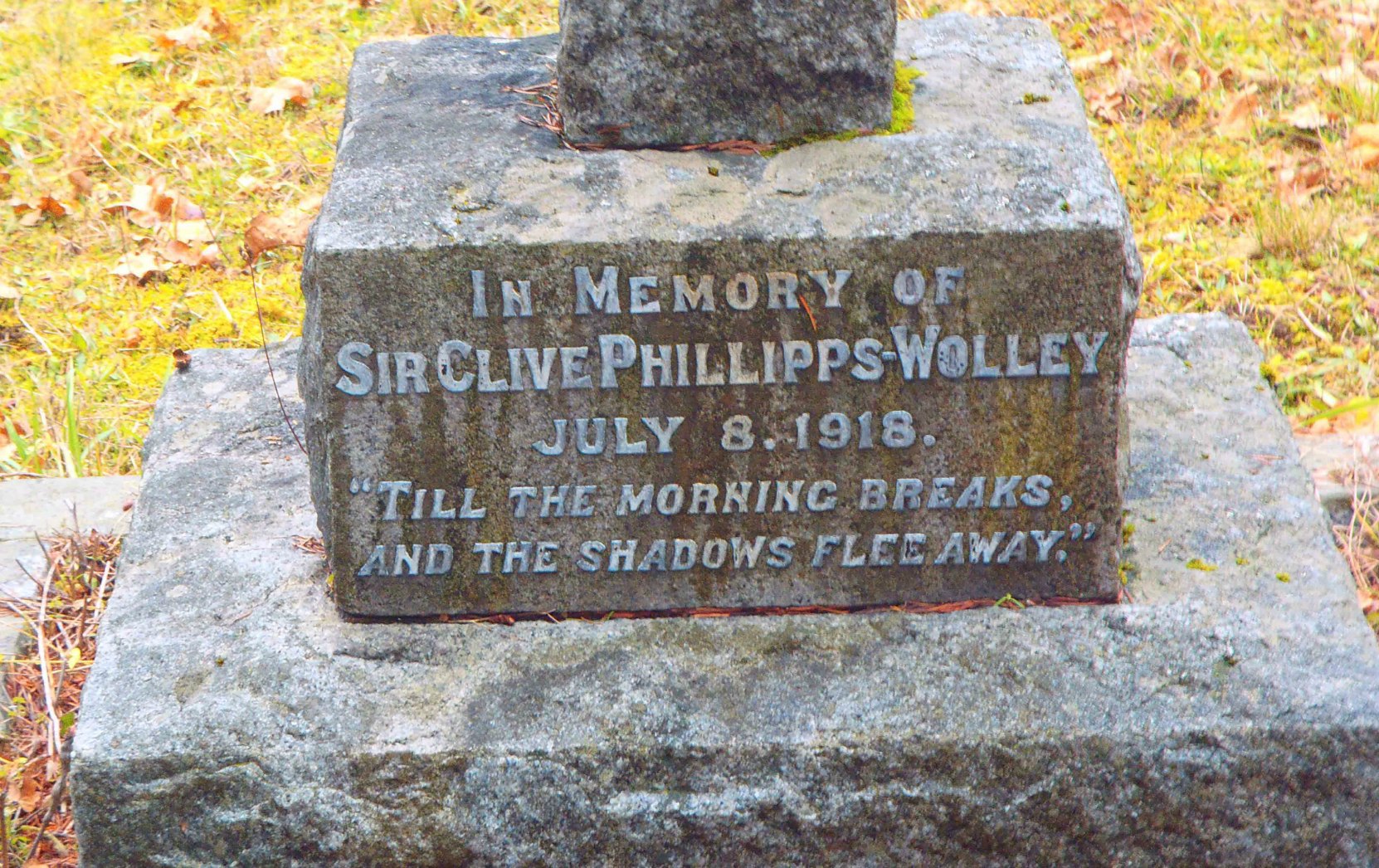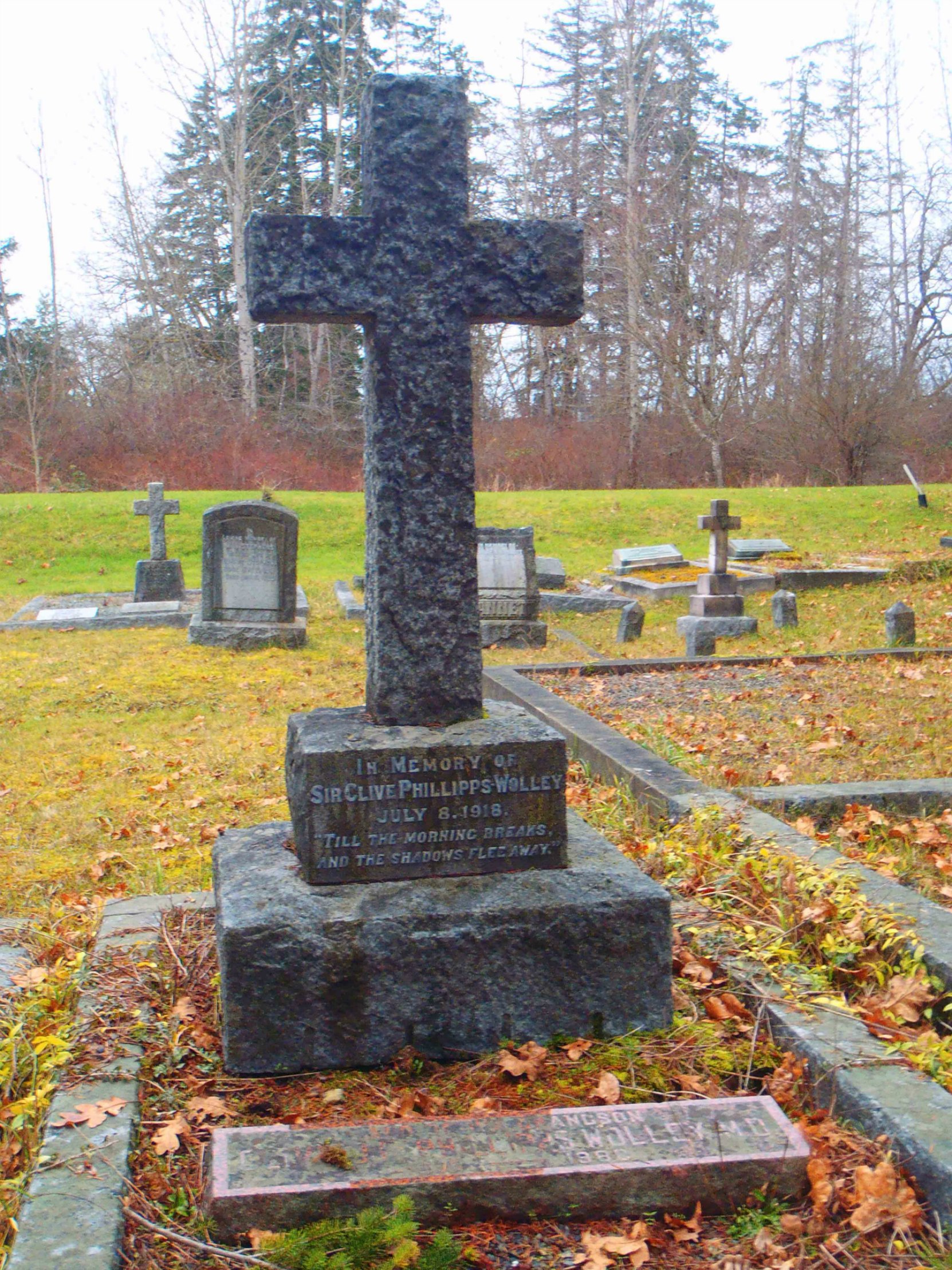Vancouver Island Masonic History Project
Sir Clive Phillips-Wolley was a member of United Service Lodge, No. 24 in Esquimalt, B.C.
The house designed for Sir Clive Phillips-Wolley in 1911 by Victoria architect Samuel Maclure is still standing at 3443 Drinkwater Road in North Cowichan, north of Duncan. Before moving to the Cowichan Valley, Sir Clive Phillips-Wolley lived in Oak Bay, where Clive Drive is named for him. His former house in Oak Bay was designed by architect William Ridgway Wilson (a Freemason).

Here is a brief biography of Sir Clive Phillips-Wolley taken from local newspaper reports of his death and funeral:
“Sir Clive Phillipps-Wolley died suddenly at 9:45 p.m. last Monday as he was about to retire for the night at his home. The Grange, Somenos. He had been in failing health for some time. The cause of his death was cerebral hemorrhage.
He was laid to rest yesterday afternoon at St. Peter’s, Quamichan, a very large number of mourners and friends, representative of all walks of life and of the activities with which Sir Clive was associated, paying there their last respects.
Sir Clive was born at Wimborne, Dorsetshire, England. on April 3rd, 1854, being the eldest son or Mr. R. A. L. Phillipps, M.A., F.R.G.S. He was’ educated at Rossall School.
His first few years after leaving’ school were spent in the diplomatic service, and he was for some years Her Majesty’s consul at Kertch, in the Crimea. Returning to England, he then read law, and was called as a barrister of the Middle Temple (Oxford circuit), in 1884. In 1876 he inherited the Wolley property at Woodhall, Hanwood, Shropshire, whose name and arms he then assumed. He obtained a commission in the British Army, attaining to the rank of captain in the 4th Battalion of the South Wales Borderers.
Some twenty years later Sir Clive came to British Columbia. He lived in the upper country for some time, being sanitary inspector of the mining districts and subsequently entering newspaper work as proprietor of The Nelson Miner.
Later on he came to the coast and lived and farmed at Salt Spring Island and Cowichan Bay, finally retiring to Somenos, where be erected his last home.
His activities in the public life of the province were very great and extended over a long period of years. Politically be was identified with the Conservative party and in the general election of 1900 he contested the Vancouver Island seat and in 1904 the Nanaimo seat, both unsuccessfully.
However, it was his championship of the Navy League, of the paramount necessity of a supreme navy to guard the Empire, that Sir Clive’s dearest interests were identified.
He founded and was president of the Victoria Navy League and was a vice-president of the British Navy League. Quite recently he was elected honorary president of the new organization of a similar character, the B. C. branch of the Navy League of Canada. In 1910 he toured Canada, speaking on behalf of the Navy League.
As a poet and novelist Sir Clive has carved for himself a niche in Canadian literature. He took rank among the first half-dozen living Canadian writers. He was responsible for the volume on Big Game Shooting in the Badminton Library, and among his better-known works are: “Sport in the Crimes and the Caucasus,” “A Sportsman’s Eden.” “Gold. Gold in Cariboo,” “The Remittance Man,” “Big Game Shooting,’’ “The Chicamon Stone,” “Songs of an English Esau,” and the “Canadian Naval Question.” Last year the publication of his collected verse “Songs from a Young Man’s Land” was his chief work.
A keen sportsman, Sir Clive was for many years a hunter of big game both in Russia and in this province. He possessed a fine collection of sporting trophies and was a brilliant lecturer and speaker on all matters pertaining to the sport and wild life of B. C. Lameness in later years prevented his active participation in the chase. He achieved some fame as an amateur boxer and on several occasions appeared in Victoria refereeing bouts.
He was a veritable pillar of the Church of England in Canada. For many years past he had been vicar’s warden of St. Mary’s, Somenos, and closely associated with the work of the synod of the diocese of Columbia. He was a vice-president of the British Isles Public Schools association.
A man of surprising versatility, ample experience of many parts of the world, diplomat, lawyer, soldier, sportsman, poet, author, he was a type of the English gentleman. More .than any man was he the life and soul of the Navy League movement in Canada and his love for the Empire shone out not merely in this work, but in his writings, speeches and actions.
His exploratory work was rewarded by a fellowship in the Royal Geographical Society, and in the New Year list of 1915 be “was created knight bachelor. His loss will be felt in many circles, not the least among those with whom he has lived for many years past.
Sir Clive was married in 1879 to Miss Jane Fenwick, second daughter of the late Rear Admiral Fenwick, R.N. Lady Phillipps-Wolley, and three married daughters survive Sir Clive. They are Mrs. J. S. Robinson, Koksilah, Mrs. Reade and Mrs. Gwyther (both in England). His daughter-in-law, Mrs. Phillipps-Wolley, resides in Duncan.
Sir Clive’s only son, Lieut. Commander Clive Phillipps-Wolley, was lost with H.M.S. Hogue in September, 1914, when that ship and the Aboukir and Crecy were torpedoed. The last seen of him by a brother officer was when “he was doing well.”
(Source: Cowichan Leader, 11 July 1918)
“PhilIipps-Wolley —The funeral of the late Sir Clive Phillipps-Wolley took place on Wednesday afternoon of last week, interment being at St Peter’s, Quamichan. At the church the hymns “On the Resurrection Morning” and “Jesus Lives” were sung during the service.. The Rev: F. G. Christmas officiated, assisted by the Rev. W. T. Keeling and the Ven. Archdeacon Sweet.
Many friends paid there their last respects, the Esquimalt Navy Yard being represented by Lieut. Yvon Birley, R.N. commanding H.M.C.S. Rainbow. The many beautiful wreaths included those from the Dominion and Provincial branches of the Navy League of Canada, the Anglican Synod, North Cowichan branch, Red Cross Society, and United Services Lodge, A. F. & A. M., Esquimalt. The pallbearers were Messrs. J. H. Whittome, L A. Coles, G. Bradley- Dyne, C. F. Walker, S. M. Lamb, and Dr. H. T. Rutherford.
A memorial service was held at St Mary’s church, Somenos, last Sunday.”
(Source: Cowichan Leader, 18 July 1918)


Would you like to leave a comment or question about anything on this page?